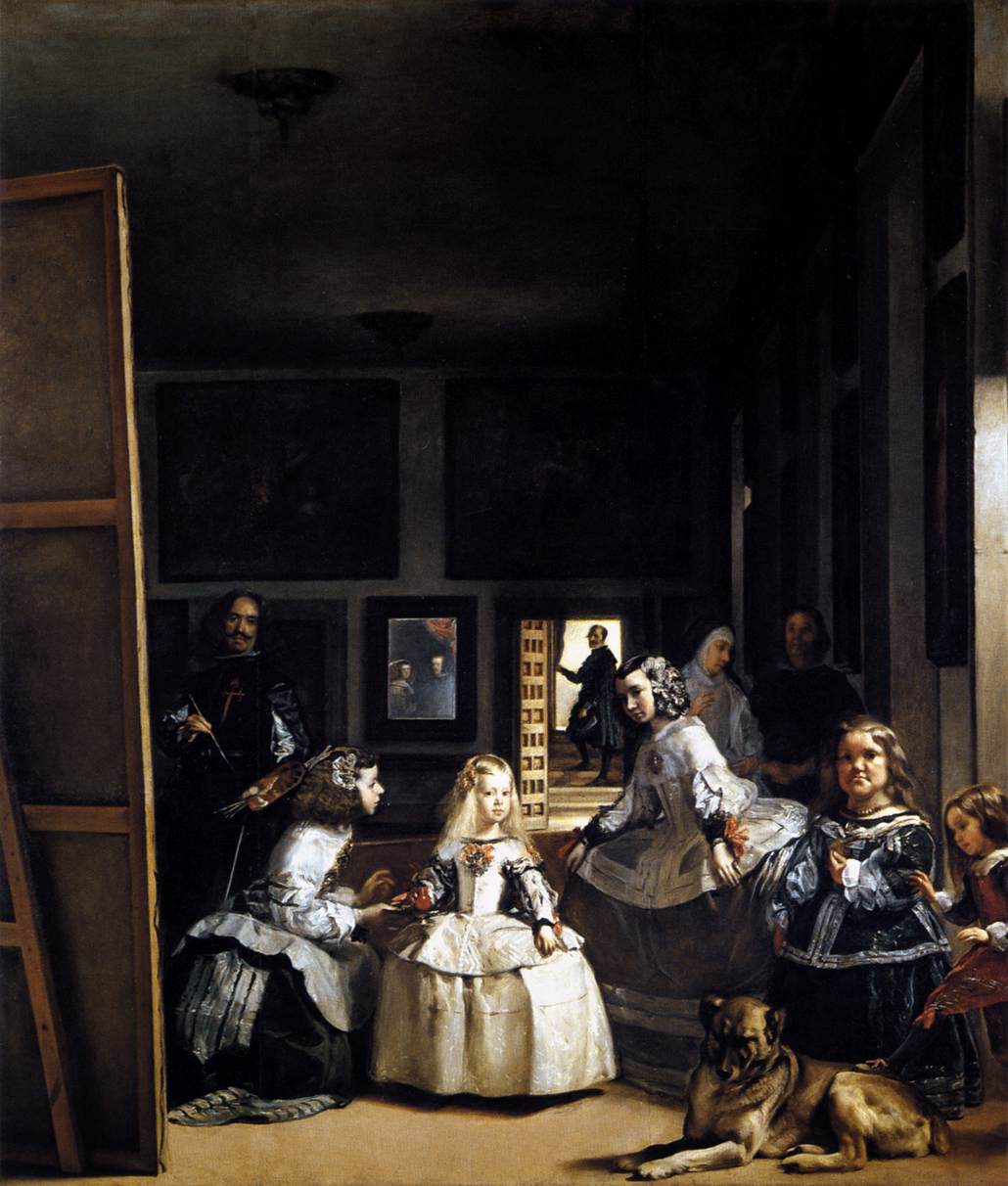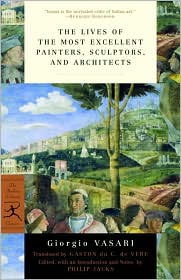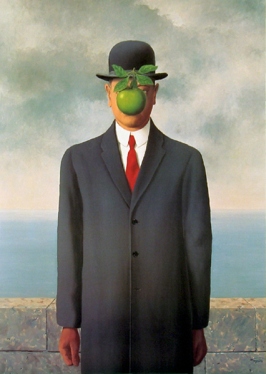He was born in Seville, Spain and apprenticed at the age of 11 to the painter Francisco Pacheco, and by the time he was 18, he was already considered a master. He started out painting solid, technically mastered portraits and religious subjects under the advice of his master Pacheco. One of these was his
Immaculate Conception, in which he is thought to have used Pacheco's daughter as the model for Mary. He later married her in 1618. He was already well established as a painter, and sought his inspiration in markets and taverns. He had an interest in painting common, everyday people in candid scenes known as
bodegones. His paintings freeze time like a snapshot, and combine the technically academic figure with the expressive, painterly quality of work that Frans Hals was known for. And he managed to master both methods, which brought him to his greatest career, where he would remain for the rest of his life. His name was Diego Rodriguez de Silva y Velázquez.
In 1622, Velázquez made a trip to Madrid to paint a portrait of Luis de Gongora, which would officially give him exposure right inside the capital city, and later he was called back to paint a portrait of the King Philip IV. Philip IV was so impressed by the portrait that he declared that he wanted no other painter but Velázquez to paint his portrait. So at the age of 24, Velázquez was appointed as court painter for Philip IV, and remained there as the king's favored painter for the rest of his life.
From that point on, Velázquez quit painting bodegones and began primarily painting portraits as well as mythological, religious, and historical scenes. But each painting carried with it the candid, common folk influence of his bodegones. Even some the portraits of the king and other royal and important figures were not always typical royal, "iconic" portraits. They seemed to depict them as regular people, as one portrait of the king depicts him as a hunter with his dog. In addition, Velázquez would paint other figures around the royal court that had nothing to do with royalty at all. He would paint the dwarfs, jesters, and other entertainers of the king, but with the same dignity and pathos as he would the king himself. Velázquez even did a portrait of his own painting slave and assistant
Juan de Pareja as a study, which has since come to be one of Velázquez's greatest and well-recognized portraits.
When he was 30, Velázquez visited Italy for some time, and had become friends with Peter Paul Rubens, and had become influenced by his style as well as the style of older Venetian masters like Titian. While in Italy, he traveled to Genoa, Venice and Naples and primarily Rome. He painted two of his greatest multiple portrait paintings -
Joseph's Coat and
Forge of Vulcan, each demonstrating more loose and scumbled brushwork under the influence of the Venetian masters.
With two travels to Italy, and immensely productive years in the court painting various royal portraits, Velázquez was practically living the dream life that would make any artist - past, present, and future - envious of the lifestyle and the career. His relationship with Philip IV was the most remarkable between any king and servant in all of history. They were more brothers than anything else. The king himself was an avid art enthusiast, and was even known to do a little painting himself. Velázquez remained the king's favorite painter, and by the time Velázquez was in his 30s and well established as the senior court painter, he could pretty much do whatever he wanted artistically.
In fact, Velázquez was commissioned to paint his astonishing portrait of the notoriously ill-tempered
Pope Innocent X, and right around the same time he also painted
The Rokeby Venus, his only nude. To paint a nude in 17th century Spain was unthinkable, as it was during the heart of the Inquisition, and anything considered indecent as a nude painting would have been destroyed, and the painter subsequently punished. But due to his status in the royal court, Velázquez was practically immune to such treatment.
One painting, however, would officially establish Velázquez with the reputation of being "Painter of painters." Painted in 1656, it was
Las Meninas. It is easily the greatest painting of the Spanish Baroque, and for some it is considered the greatest painting in the world. It is said that the average person in an art museum looks at a particular work for about 8 seconds before moving on. 8 seconds would not even give due justice to the frame for
Las Meninas. The painting shows the Infanta Margarita being tended to by the meninas, or ladies in waiting, and Velázquez himself on the left side working on a large canvas. The figures are staring directly outward, and the faint image of the king and queen are shown in the mirror in the background. Who is everyone looking at? Are the Infanta and ladies in the midst of a painting session of the king and queen, or are the king and queen walking in on a typical scene of everyday royal life for the young Margarita? One thing is certain - the viewer is getting a glimpse of everything happening, regardless of what is actually happening. Suddenly it is us as the viewers who become the subject of the painting, as the main figures are looking directly at us looking back at them. All riddles aside, the technical execution of the painting is by far the best that Velázquez ever painted.
Velázquez was knighted with the Order of Santiago in 1659, the climactic honor of his life. He only lived until the following year, as he was stricken ill with a fever, and died on August 6, 1660. One of the main mysteries of
Las Meninas is the appearance of the red cross of the Order painted on Velázquez's chest in the painting. Since the painting was done in 1656, and he was knighted in 1659, the red cross would not have originally been there. It has been suggested that Philip IV painted the red cross himself as sort of a posthumous honor to his greatest servant and friend. Luca Giordano referred to
Las Meninas as the "theology of painting," because "just as theology is superior to all other branches of knowledge, so
Las Meninas is the greatest example of painting." I couldn't have said it better myself.
 |
Diego Velázquez Las Meninas oil on canvas 318 x 276 cm 1656 |

















































